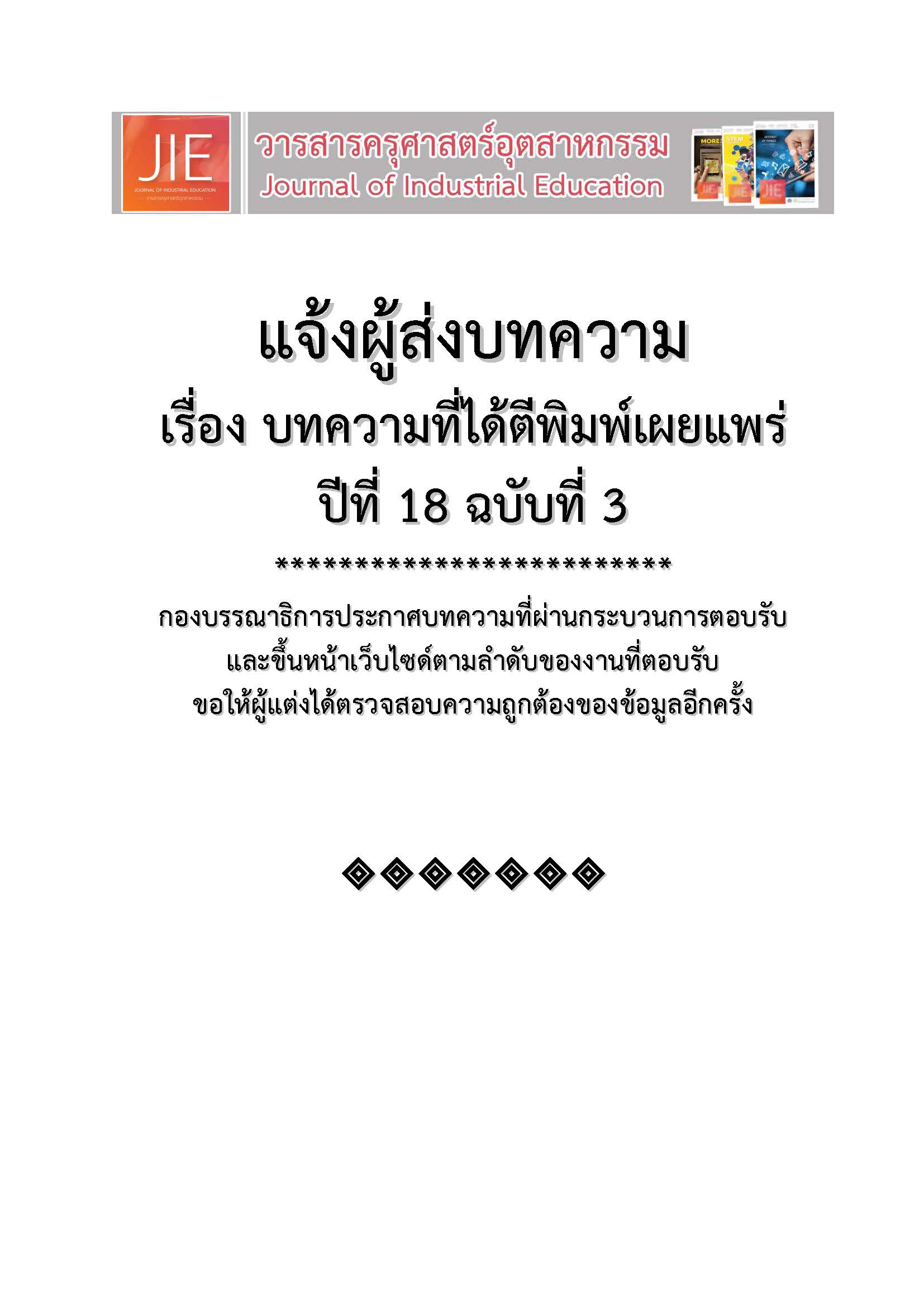THERMAL PROCESSING TECHNOLOGY FOR RICEBERRY PORRIDGE USING CANNING METHOD
Main Article Content
Abstract
The study of the consumption of porridge in the Ladkrabang Industrial Estate (sample comprising 100 people)- 74 % preferred to consume porridge for breakfast; 60.90 % cooked porridge, and 70 % ate a consumer purchase porridge made from riceberry, 63.30 % thought riceberry were healthy food, 38.60 % prefer to eat plain porridge and it should has price 25-30 bath (36.40 %)
The riceberry porridge canning process has 3 formulas for riceberry and water, the ratio 1:18, 1:20 and 1:25 respectively, fill 180 g of canned riceberry had a head space of 4/16 inch. The canned food was exhausted and then immediately seamed. The results showed that all products which were thermally processed for 19 min at 121 °C had F0 values of 4.4 min and were then immediately cooled. The visual quality attributes of the outer and inner appearance of the canned foods were good. The vacuum value and the head space of both 3 formulas canned foods were in the range of 5 to 7 in-Hg and 4/16 inch, respectively.
After storage for 30 days, the pH levels of the F1 F2 and F3 canned foods were 6.3-6.4, respectively. The total acidity of riceberry porridge canned foods was 3 formula had few changes. There was no contamination from acid producing microorganisms. Canned riceberry porridge had levels of fiber of 1.49 % and ash content of 1.70 %
A 5-points hedonic test showed that F3 (1:25) canned riceberry porridge had a higher preference score, 3.5 is more likely, it being dark brown and slightly purple, with a clear rice smell and with appropriate condensed viscosity. The production cost of the riceberry porridge canning process, which fill 180g/can, was 22.38 baht/can.
Article Details
"The opinions and contents including the words in papers are responsibility by the authors."
"ข้อคิดเห็น เนื้อหา รวมทั้งการใช้ภาษาในบทความถือเป็นความรับผิดชอบของผู้เขียน"
References
Sappasith Klomklao, et al. 2017. Food for life and Beauty. Faculty of Science and Food Technology Department of Technology and Community Development Thaksin University.
Agricultural Editors. 2014. Rice berry rice new species Thai Farmers Turn. 10th edition. Bangkok: Panyachon distributor.
Mali Nachaisin, et al. 2016. Development of riceberry nutrition instant rice; high in anthocyanin for healthy elderly person. Physics program, Faculty of Science and Technology Rajabhat Maha Sarakham University.
Nunchanok Nanthachai, et al. 2018. Physical and Chemical Properties of Khanom-pun-klib from Pregelatinized Rice-berry Flour. Journal Agricultural Science, 49(2)(Suppl.), p.649-652.
Kanlaya Vanichbuncha. 2007. Statistical Analysis: Statistics for Decision Making. 4th edition. Bangkok: Chulalongkorn Publishing House.
Holdsworth,S.D. 1977. Thermal processing of packed foods. Blackie Academic and Professional Co.Inc. , New York.
Larry Maturin and James T. Peeler . 2001. FDA Bacteriological Analytical Manual (Chapter 3). Retrieved : https://www.fda.gov/food/laboratory-methods-food/bam-aerobic-plate-count, February 6, 2011.
AOAC. 2005. Association of Official Analytical Chemists. Official methods of analysis, 985.29, 18th Edition The Association of Official Analytical Chemists Arlington, Virginia.
Krisda Siraphuch. 2014. The benefits of porridge. Retrieved : https://www.mitrphol.com/sugar/community_tip_trick.php?id=18, February 6, 2011.

